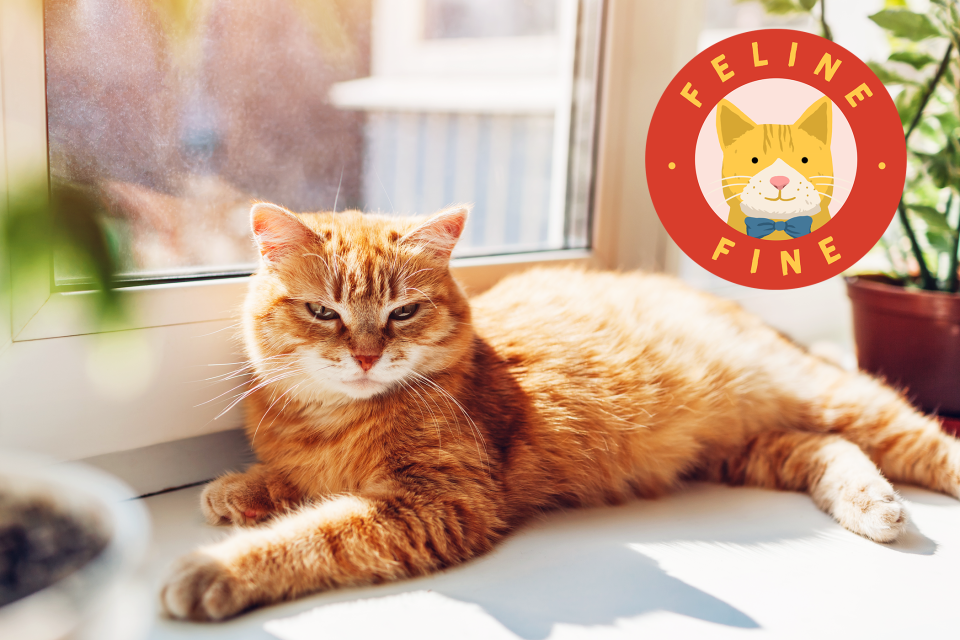Cats Can Get Sunburns, But Here's How to Prevent It
We're certainly entering sunburn season here in the United States as any beachgoer, park visitor, or runner will tell you. But guess what: It's also a good time to keep an eye on your cats as well.
It's rare, but cats can get sunburned—especially if they have white hair (or none at all). Yes, even the ones who live exclusively indoors. The sunburns are so small that you might not even notice but you'll definitely want to prevent them from happening because by the time you do notice them, your cat could be in for a drastic surgery.
"You might not notice anything until there's a much bigger problem, and usually it's skin cancer by that point," says Fiona Lee, VMD, DACVD, MBA, and the practitioner at the Pet Dermatology Center.
RELATED: Common Skin Conditions in Cats & How to Recognize Them

maryviolet / Adobe Stock
Do Cats Get Sunburns?
Yes but the signs your cat has a sunburn are pretty subtle. They'll usually have irritation around their ears and nose, Lee tells Daily Paws. You might see redness or even some scaling in those areas, but you'll have to be really up-close-and-personal with your cat to notice.
"You don't realize how much damage there is until it's too late, so it could be years or even a decade later," Lee says.
Over the years, sun damage can cause small scabs on your cat's face that don't seem to go away or will bleed every so often. It may even grow bigger over time. If you see those scabs, set up a time to see your cat's veterinarian. It could be a mass or a tumor that can be "pretty aggressive," Lee says. It might result in the removal of your cat's ears or parts of her nose—and nobody wants that. (The good news on those tumors is they remain localized to the nose and ears, so they won't spread to other parts of your cat's body, Lee says.)
Luckily, cat sunburns are pretty rare. Lee has never treated a sunburned cat, for instance, in part because the cats who do have the major problems with their nose or ears will likely need to see an oncologist.
Plus, cats generally won't lay outside in the sun for long amounts of time, which is how dogs get a sunburn in many cases.
Cat Breeds Most Susceptible to Sunburn
The same principle applies for dogs: Cats with white hair, only some hair, or hairless cats are going to be the ones most at-risk for sun damage because they have less between their skin and the sun. So you need to really limit your cat's time outside or napping near a sunny window if you have a sphynx, Devon rex, or another kind of hairless or white cat breed.
The breeds with darker hair or a lot of it—think Maine coon—are the most safe from sun damage, Lee says. It's like they're wearing clothes to protect them from the sun.
Cat Sunburn Treatment and Prevention
If you think your cat is sunburned—or has been in the past—it's a good idea to talk with your vet about it. They can advise you on how to treat and prevent future sunburns. Remember, if your cat's sunburn eventually leads to a tumor, it will require a drastic surgery to remove it.
Prevention is much easier. Indoor cats can get sunburned through a closed glass window, so you can draw the shades, blinds, or curtains if you're worried, Lee says. You can also try to persuade your cat to sunbathe or rest in another (hopefully safer) space in the house.
For outdoor cats, the simplest way to prevent sunburns is to keep your cat inside or out of the sun during the peak sunlight hours, about 10 a.m. to 4 p.m. However, if you do let her out around dusk, make sure she's protected against the influx of insects that will be waiting for her out there.
Sunscreen for pets does exist, but we all know how hard putting anything topical on your cat can be, Lee says. Or they might just groom it off themselves. Your best bet is just avoiding harsh sun altogether.

